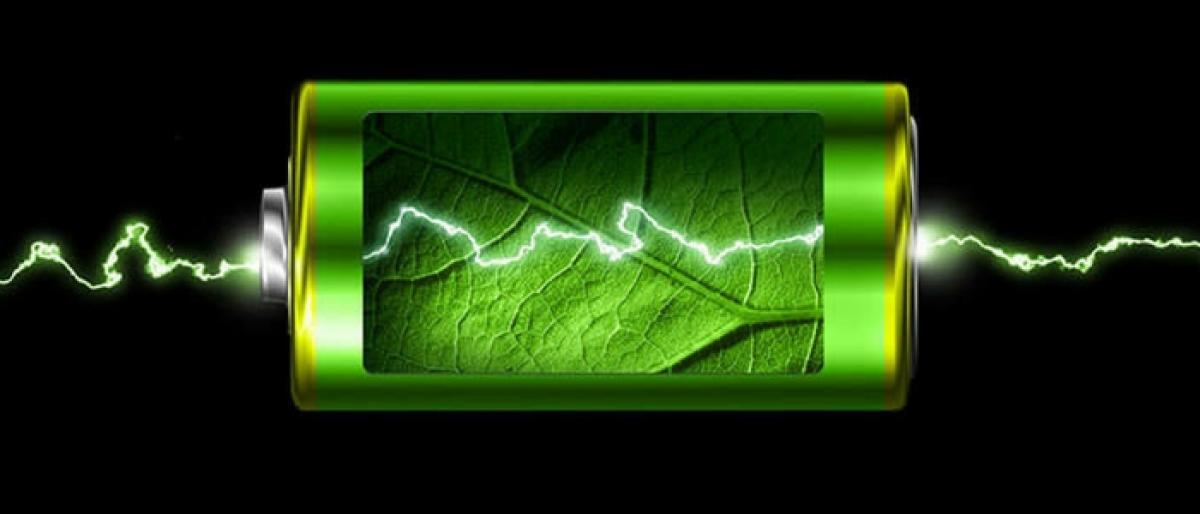Live
- Kartika Purnima 2024: A Festival of Spiritual Significance and Cultural Celebration Across India
- Children’s Rights Day celebrated grandly
- YSRCP forms spl teams to support social media activists
- AI-driven dataset to reveal new insights around diabetes
- Nurturing curiosity, empathy & innovation in children
- Vizianagaram MLC bypoll cancelled
- Governor Abdul Nazeer pays tributes to Pandit Nehru
- AP Assembly session continues for fourth day, discussion on budget today
- YSRCP leader Gowtham Reddy booked for attempt to murder
- Chief Minister A. Revanth Reddy Extends Kartika Purnima Greetings
Just In

Scientists have invented an entirely new kind of bio-compatible battery which produces the same kind of ion-based electrical energy as used by humans and other living things.
Washington: Scientists have invented an entirely new kind of bio-compatible battery which produces the same kind of ion-based electrical energy as used by humans and other living things.
In our bodies, flowing ions (sodium, potassium and other electrolytes) are the electrical signals that power the brain and control the rhythm of the heart, the movement of muscles, and much more. In traditional batteries, the electrical energy, or current, flows in form of moving electrons.
This current of electrons out of the battery is generated within the battery by moving positive ions from one end (electrode) of a battery to the other. The battery developed by researchers at University of Maryland in the US does the opposite. It moves electrons around in the device to deliver energy that is a flow of ions.
This is the first time that an ionic current-generating battery has been invented, researchers said. "My intention is for ionic systems to interface with human systems," said Liangbing Hu, professor at the University of Maryland.
"So I came up with the reverse design of a battery. In a typical battery, electrons flow through wires to interface electronics, and ions flow through the battery separator," Hu said.
In the reverse design, a traditional battery is electronically shorted (that means electrons are flowing through the metal wires). Then ions have to flow through the outside ionic cables. In this case, the ions in the ionic cable - here, grass fibres - can interface with living systems. The battery also has another unusual feature - it uses grass to store its energy.
To make the battery, the team soaked blades of Kentucky bluegrass in lithium salt solution. The channels that once moved nutrients up and down the grass blade were ideal conduits to hold the solution.
The demonstration battery the research team created looks like two glass tubes with a blade of grass inside, each connected by a thin metal wire at the top. The wire is where the electrons flow through to move from one end of the battery to the other as the stored energy slowly discharges. At the other end of each glass tube is a metal tip through which the ionic current flows.
The battery could be used to develop medical devices for the disabled, or for more efficient drug and gene delivery tools in both research and clinical settings, as a way to more precisely treat cancers and other medical diseases, said Zhang, who performed biological experiments to test that the new battery successfully transmitted current to living cells.

© 2024 Hyderabad Media House Limited/The Hans India. All rights reserved. Powered by hocalwire.com







